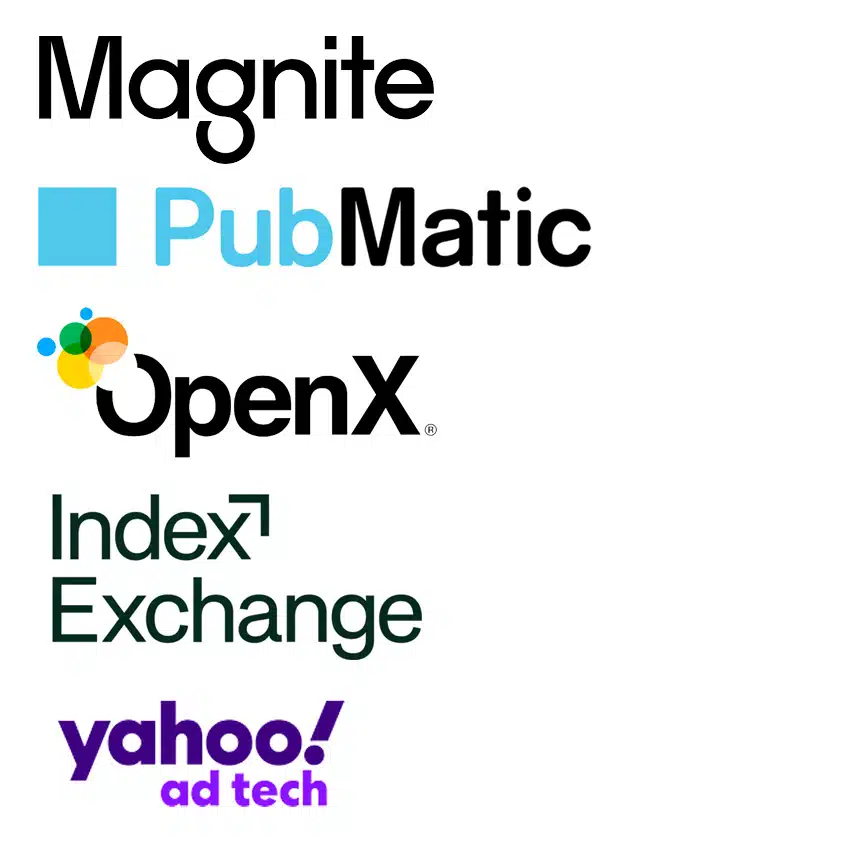It’s pretty safe to say that anyone familiar with digital marketing has heard about programmatic advertising before. After all, it’s one of the most popular forms of display marketing, with a massive 88% of total spend having gone towards it in 2021.
But what exactly is programmatic advertising, and how can it make sure that your campaigns are effective? In this guide, we’ll cover everything you need to know about programmatic media advertising, from the basics of what it is to working with a Programmatic Advertising Agency like Gourmet Ads.
A Brief History : The Rise Of Programmatic Ad Buying
Digital Display Advertising has come a long way since its humble beginnings in the early days of the internet. In its earliest form, display advertising was little more than a means of promoting banner ads on websites.
These were static images that did not interact with users in any way, and as such, their effectiveness was somewhat limited. With the advent of Flash animation and other interactive technologies, display advertising became more sophisticated and effective. Advertisers began to create ads that were more interactive and engaging, making them more likely to generate clicks and conversions.
However, even with these advances, the process of buying and placing display ads was still quite cumbersome and time-consuming. It involved manually negotiating deals with individual website owners or ad networks, and then working with those parties to get the ads placed on the desired websites.
This all changed with the rise of programmatic advertising. With programmatic advertising, all of the buying and placement of display ads is automated through software. This not only makes the process much faster and easier, but it also allows for a much higher degree of targeting and personalization.
Programmatic advertising is now the dominant force in the display advertising landscape, and it is only continuing to grow in popularity.
Programmatic Advertising Definition
While the “What Is Programmatic Advertising” definition can get a lot more complicated depending on how deeply you go, in simple terms, programmatic advertising is the process of automatically buying and optimizing digital campaigns through the use of the software. This is in contrast to the more traditional method of buying advertising space, in which digital marketers will often have to prepare and administer a number of proposals, tenders, quotes, and negotiations in order to nail down a deal.
Digital programmatic is one of the advertising techniques in which many of the steps are automated through the use of software that can connect to multiple ad exchanges and make real-time bids for ad space on behalf of the advertiser. The software will also track and analyze the performance of each campaign in order to optimize it on the fly and improve results.
Understanding Digital Advertising vs Programmatic Advertising
Although the terms digital advertising and programmatic advertising are sometimes used interchangeably, it’s important to note that there is a distinct difference between the two.
The first is a broad term that encompasses all forms of marketing that make use of digital channels and technologies. This includes everything from search engine marketing (SEM) and social media marketing to email marketing and display advertising.
Programmatic advertising, on the other hand, specifically refers to the process of buying and selling advertising space through programmatic means. It’s a subset of the digital advertising space, and it’s the dominant force in the display advertising landscape.
In other words, all programmatic advertising is digital advertising, but not all digital advertising is programmatic advertising.
How Does Programmatic Advertising Work? – Programmatic Advertising Explained
As we’ve already covered, programmatic campaigns in the world of advertising takes the ad buying process to a new level through the use of automation and algorithmic software. But how exactly does this work in practice?
In order to understand how programmatic advertising works, it’s first important to understand the different components within its basic ecosystem. There are four main parts involved, all of which work together in providing publishers and advertisers a seamless means of trading.
A Demand Side Platform, or DSP, is an interface that allows agencies, networks – and just buyers in general – to purchase ad spaces from publishers and exchanges. In the programmatic buying process, a DSP will put an advertiser’s criteria as it relates to price, audience and campaign goals forward, assess its available inventory and match available ad spaces to those needs. Demand Side Platforms do this all in real-time and will also monitor campaign success, making changes where necessary to help it achieve its goals.
Major DSPs include Xandr Invest, The Trade Desk, Google Dv360, Amazon Ads, MediaMath.
A Supply Side Platform, otherwise known as SSP, is a programmatic monetization gateway used by publishers in selling online advertising spaces across their websites and mobile apps. It uses an auction-based system, connecting to demand-side platforms and ad exchanges in allowing advertisers to bid on available ad inventory. Publishers use SSPs to manage the sale and allocation of their ad space, leverage real-time data such as overall yield and fill rates, as well as maximize their overall revenue. Major SSPs include Xandr Monetize, Magnite, Pubmatic, OpenX, Index Exchange and Yahoo.


Data Management Platform (DMP)
A Data Management Platform, or DMP, is a software tool that allows publishers to consolidate data relating to their target audience through multiple channels and sources. To do this, it analyzes user behavior across the web, identifies trends and segregates data into distinct profiles and segments. This data is then used to inform ad placements, improve targeting accuracy and bid strategies – all of which aim to improve a campaign’s performance and return on investment.
An Ad Exchange is an online marketplace that allows publishers to sell their ad space to the highest bidder through an automated process. It enables advertisers to purchase ad spaces in bulk across a number of sites with little friction, comparatively easier than traditional means of direct negotiation.
Ad Exchanges will consider the dynamics of supply and demand when it comes to ad placements, and set a price based on that. This is usually done on a basis of cost per thousand impressions.
What Is An Example Of Programmatic Advertising?

Pretend you are an advertiser who wants to run a display ad campaign on a website. In the past, you would need to identify the website or websites that you want your ad to appear on, and then reach out to the respective sales teams in order to negotiate a deal.
On a programmatic advertising platform, all of that is taken care of by software. You simply need to identify your target audience, set your budget and campaign goals, and let the program do the rest.
What Are The Benefits Of Programmatic Advertising?
There are a number of reasons why programmatic advertising has become so popular in recent years. Some of the main benefits include the following:
Increased Efficiency
Programmatic advertising is much more efficient than traditional methods of ad buying. It automates a lot of the processes that would normally be done manually, such as identifying target websites, negotiating rates and placing ads. This not only saves time, but also reduces the potential for human error.
Greater Reach
With programmatic advertising, you can reach a much wider audience than you could with traditional methods. This is because you are not limited to any one website or publisher – your ad can be placed on any website or app that is part of the programmatic ecosystem, as long as it meets your targeting criteria.
Improved Targeting
Programmatic advertising also allows for much more precise targeting than traditional methods. This is because you can target users based on their past behavior and other factors, such as demographics and interests.
This means that your ads are more likely to be seen by people who are actually interested in what you have to offer, which should result in a higher conversion rate.
Real-Time Bidding
Real Time Bidding is the process of buying and selling ad space through an auction-based ad exchange system. This allows advertisers to bid on available ad inventory in real time, meaning that they only pay for ad space that they actually end up using.
This is in contrast to the traditional method of buying ad space in advance, which can often result in wasted spend if the campaign does not perform as expected.
Cost-Effective
Programmatic advertising is much more cost-effective than traditional methods, due to its increased efficiency and Real Time Bidding. This means that you can get more bang for your programmatic advertising cost and budget, as you are only paying for ad space that is actually being used.
Automated Reporting
Programmatic advertising also comes with automated reporting, which can give you insights into the performance of your campaign in near-real time. This is helpful for identifying any issues and making adjustments on the fly, to ensure that your campaign is as effective as possible.
Building Effective Programmatic Ad Campaigns
Now that we know what programmatic advertising is and some of the benefits of using it, let’s take a look at how to build an effective campaign.
Define Your Target Audience
As with any advertising campaign, it is important to start by defining your target audience. This can be done using a number of different data points, such as demographics, interests and past behavior.
Once you have a good idea of who your target audience is, you can then start to build out your targeting criteria.

Set Your Budget
Another important consideration is your budget. Programmatic advertising allows you to set a maximum spend per day, week or month, so you need to make sure that you are comfortable with the amount that you are willing to spend.
It is also worth noting that programmatic marketing generally has a lower cost-per-impression (CPM) than traditional methods, so you may be able to get more bang for your buck.
Choose Your Goals
Before starting your campaign, it is also important to choose what goals you want to achieve. Are you looking to increase brand awareness? Drive traffic to your website? Increase sales? Once you know what your goals are, you can start to build out your campaign accordingly.
Select Your Ad Format
There are a number of different programmatic display ad formats that you can choose from, so it is important to select the one that is best suited to your goals. Some of the most common formats include display ads, video ads and native ads.
Set Your Bidding Strategy
Once you have selected your ad format, you will need to set your bidding strategy. This will determine how much you are willing to pay for each ad impression.
There are a number of different bidding strategies that you can choose from, so it is important to select the one that best aligns with your goals.

Launch Your Campaign
Once you have everything set up, you are ready to launch your campaign. You will need to monitor your campaign regularly to ensure that it is performing as expected and make adjustments as needed.
But if you follow these steps, you should be well on your way to running a successful programmatic ad campaign.
How To Find The Right Programmatic Ads Platform
If you’re considering using programmatic advertising for your next campaign, then you’ll need to choose a platform to use. There are a number of different options available, so it’s important to take the time to find the right one for your needs.
Here are some factors to consider when choosing a programmatic ads platform.
Supported Ad Formats
First, you need to check that the platform supports the ad format or formats that you want to use. For example, if you want to run a video ad campaign, then you’ll need to make sure that the platform supports this type of ad.
A good programmatic ads platform will support a range of ad formats including Display Advertising (Banners) Video, Native, OTT or CTV to give you the flexibility to run the campaigns that you want.
Targeting Options
Next, you need to check that the platform offers the targeting options that you need. As mentioned above, programmatic advertising allows for very precise targeting, so you need to make sure that the platform you choose supports the targeting criteria that you want to use.
For example, if you want to target users based on their location, then you’ll need to make sure that the platform supports this option.

Reporting and Analytics
It’s also important to verify that the platform you’re interested in offers reporting and analytics features. While it may not be the most exciting part of using programmatic ads, being able to track the performance of your campaigns is essential for making sure that they are successful. A good platform will offer a range of reports and analytics tools, to give you the insights that you need to improve your campaigns.
Pricing
Finally, you need to consider the pricing of the platform. While programmatic media buying is generally more cost-effective than traditional methods, the price of the platform can still make a difference. When comparing prices, be sure to consider the features and functionality that each platform offers, to get an accurate comparison.

The Future
There’s no doubt about it, programmatic advertising is the future of digital marketing. And while it might still be in its early stages, it’s already having a major impact on the way that marketers operate.
If you’re not already using programmatic ads, then now is the time to get started. And if you are, then it’s important to make sure that you’re using the right platform. By considering the factors listed above, you can be sure to find the right programmatic ads platform for your needs.












